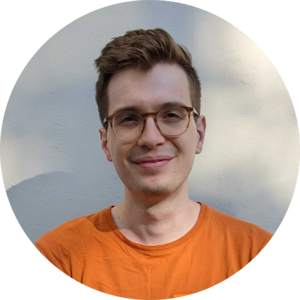Fabian Jogl
I am a final-year PhD student at TU Wien advised by Thomas Gärtner. My research interests lie in the intersection of machine learning and classical algorithmics. My goal is to perform research that combines applied machine learning with a strong theoretical and mathematical basis.
News
- (November) I have joined the lab of Professor Mahito Sugiyama in Tokyo 🇯🇵 as an intern.
- (October) New arXiv preprint: Expressive edge-based GNNs that are near-linear time with well characterized expressivity (in terms of homomorphism counting and first-order logic).
- (May) New arXiv preprint: Higher GNN expressivity can lead to worse generalization unless balanced by dataset size.
- (April) I have passed my proficiency evaluation. Many thanks to the committee: Professors Michael Bronstein, Thomas Gärtner and Emanuel Sallinger.
2024
- (November) Our paper Maximally Expressive Graph Neural Networks for Outerplanar Graphs has been accepted at TMLR
- (November) Top reviewer at NeurIPS 2024
- (October) Two workshop papers at NeurIPS: “An Analysis on Cross-Dataset Transfer of Pretrained GNNs” (NeurReps) and “Is Expressivity Essential for the Predictive Performance of Graph Neural Networks?” (Scientific Methods for Understanding Deep Learning)
- (May) Our paper The Expressive Power of Path-Based Graph Neural Networks has been accepted at ICML 2024
- (March) Gave a talk at BeST 2024 (video in german)
2023:
- Happy to be recognized as a top reviewer at NeurIPS 2023
- Two extended abstracts accepted at the LoG 2023 conference: Extending Graph Neural Networks with Global Features and Maximally Expressive GNNs for Outerplanar Graphs.
- Our paper Maximally Expressive GNNs for Outerplanar Graphs has been accepted as an oral at the GLFrontiers@NeurIPS workshop.
- Our paper Expressivity-Preserving GNN Simulation has been accepted at NeurIPS 2023.
- Best Poster Award at G-Research’s ICML poster party where Maximilian Thiessen presented our poster on Expectation-Complete Graph Representations with Homomorphisms
- Our paper Expectation-Complete Graph Representations with Homomorphisms has been accepted at ICML 2023.
Education
- PhD in Computer Science at CAIML and TU Wien advised by Thomas Gärtner (2022-2026)
- MSc in Logic and Computation at TU Wien (2019-2022)
- BSc in Physics at University of Vienna (2016-2019)
Awards and Scholarships
- Top reviewer at NeurIPS 2023 and 2024
- Best Poster Award at G-Research’s ICML poster party for Expectation-Complete Graph Representations with Homomorphisms
- Best Poster Award at MLG@ECML determined via community vote (2022)
- Merit Scholarship in Logic and Computation (2020)
- Merit Scholarship in Physics, first place of all physics students (2019)
- Merit Scholarship in Computer Science, first place of all computer science students (2018)
- Merit Scholarship in Physics (2017)
Other Research Experience
Summer@EPFL Research Fellowship: DATA Lab at EPFL (Summer 2022)
Research on high dimensional data cubes advised by Christoph Koch and Peter LindnerStudent Employee: CV Lab at TU Wien (2021 - 2022)
Research on applying computer vision techniques to historical films
